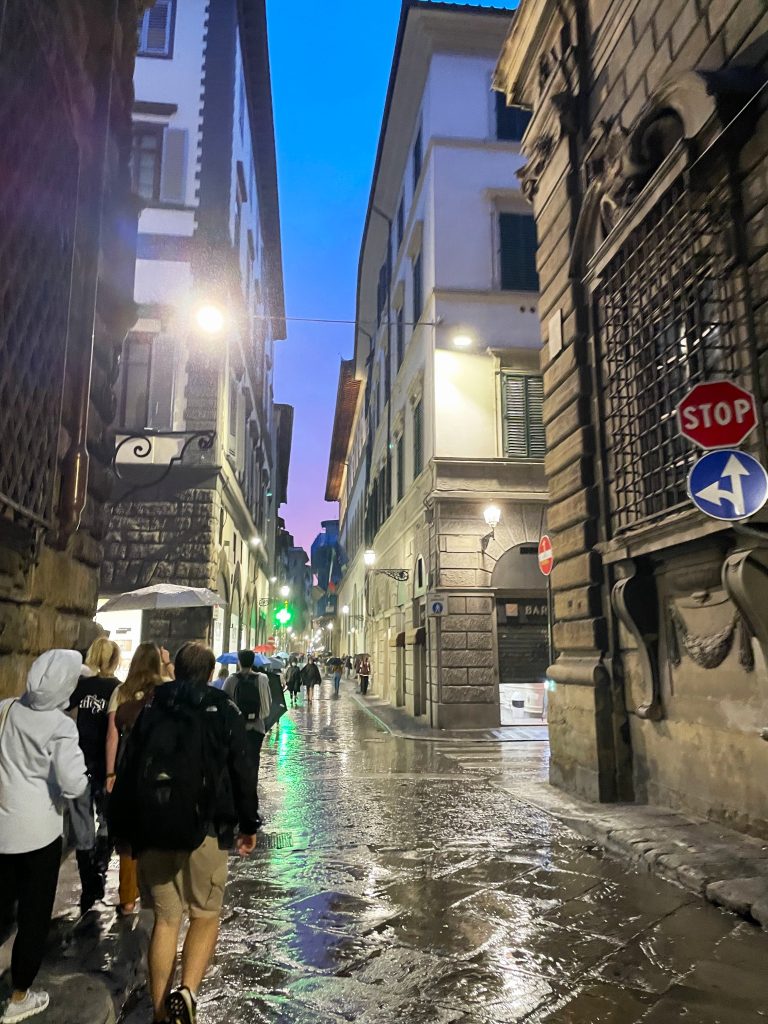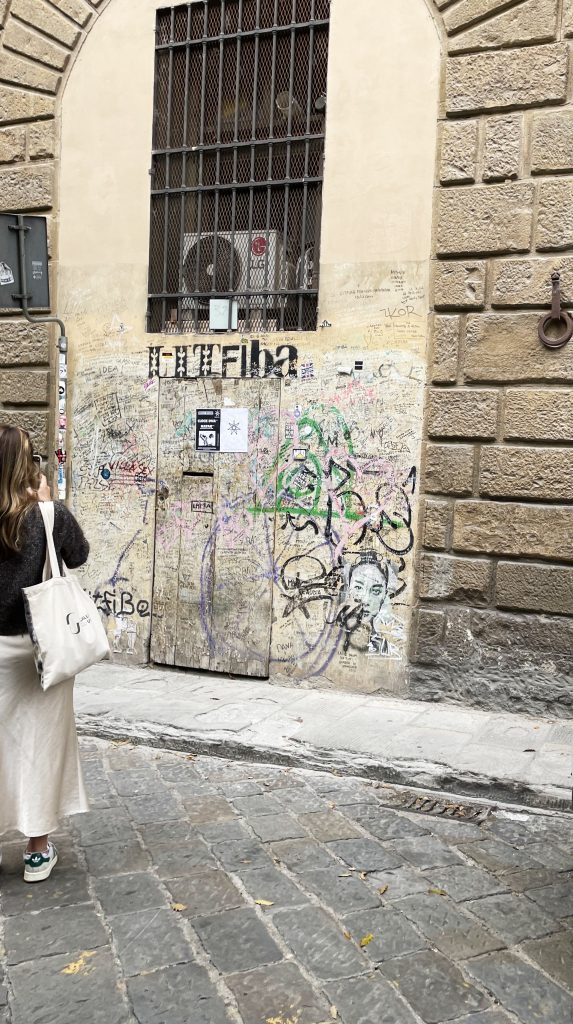By Isaac Grad, University of Connecticut – ISI Florence Fall 2024
Though you may only be in Florence for four months, that’s plenty of time to improve your Italian. Most students come to ISI knowing hardly a few words of Italian, but that doesn’t mean you shouldn’t go out of your way to learn more. After all, the best way to learn a language is to immerse yourself in it, so living in Italy for a semester is your best chance to put yourself to the test!

Of course, learning a language is easier said than done. There’s so much to learn; if you’re beginning to learn Italian after deciding to study in Italy, you have limited time. However, don’t let this discourage you from starting before arriving, there are many ways to get a base level in a language from home.
New learners also fear initiating conversations in their target language, unsure if they’ll be understood if the person will respond in a way that they can understand if they’ll have to switch to English. Speaking a new language that you’re still learning is indeed scary, but people are generally very understanding and appreciative when you go out of your way to try to speak Italian, even if it’s just a little. If you have no Italian, it’s still a great opportunity to get started, which you can do in a variety of ways.
Watching Movies
My favorite mode of learning a new language is by initially immersing myself in media in my target language. Personally, that often means watching Italian movies and videos on YouTube. You can do this before even leaving for your trip, and once you arrive you can take advantage of being in Italy just by using Netflix here, which has many more movies and shows in Italian, as well as favorites from America dubbed in Italian. For example, just as many people use “Friends” to learn English, while here in Italy you can switch the language to Italian and use it to learn Italian! I like to watch movies and shows that I’ve seen and know quite well in English, so if there are words I don’t recognize in Italian I still understand what’s happening and can learn those new words. Sometimes I write down words I hear a lot or think will be important to engrain them in my mind better, but it’s also effective to watch without taking notes as that is generally more fun.




Journaling
Another great way to practice daily is by journaling, which you can also do to prepare for your trip or after you arrive. I like to journal every night before bed, which is good practice anyway, but even better when you write what you can in Italian. This is very useful because you learn words that are about things you did, and thus words that are useful to your daily life. Journaling is also a good way to track your progress in your target language as you can look back through your entries and see the increase in how much Italian you use. The same concept applies to my next step, which is thinking in my target language as much as I can during the day. At first, this means actively trying to translate words that I’m using, and looking up a lot of translations when I don’t know a word. After some time this means going over my schedule and thoughts in Italian, which as time passes, begins to come naturally just as you would think in English. With this, you must try to use your Italian words enough so you aren’t translating from English to Italian but rather associating the meaning of the word with the Italian word. You don’t want to get into the habit of translating in your head, as when you’re in a conversation you often don’t have time to translate each word from Italian to English to understand and then reverse to respond. Along with that, when you’re learning a language it’s best to learn words as we did when learning our native language. For example, when you learned the word “mom” as a baby you didn’t do any translating, you just heard the word enough times in context and that word began to mean “mom”. This is the same idea when learning Italian: you want to give meaning to the words so you aren’t translating in your head. Plus there are different structures and usage of words in different languages so it isn’t always helpful to compare a language to how we use our native language. If you try to translate each word exactly from English to Italian you’ll struggle to find those exact translations.
Drinking Coffee
Once you’re in Italy the real fun of language learning begins! When I arrived I tried to increase my comfort in speaking by going somewhere with short interactions, such as a café. Before I went I tried to plan out the conversation in Italian, looking up any words I didn’t know. Luckily, in your average café experience, you don’t exchange many words, but it still feels daunting the first time. I rehearsed what I would say beforehand, prepared myself for the possibility that we’d have to switch to English, and accepted that my desire to learn Italian trumped my fear of embarrassing myself. This very nerve-wracking experience became a daily routine as I very quickly grew my confidence in initiating small interactions in Italian, knowing most people are happy to let me practice my Italian, and also understanding if there’s something I don’t understand. Ordering a coffee became ordering gelato, and then lunch, and dinner, and so on. From there you can utilize whatever resources are available to you. ISI has various activities that involve the local community, giving you great opportunities to practice your Italian in more advanced ways. You will also take an Italian course while abroad, which will help improve all aspects of your Italian. Italian is a beautiful language, so do your best to seize your opportunity to learn it!
